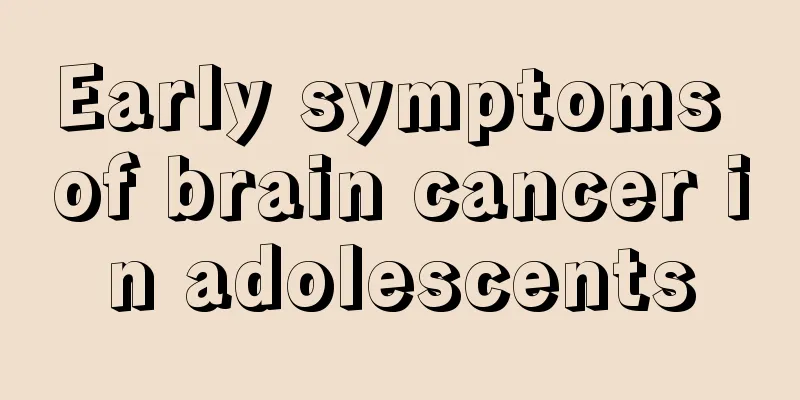Early symptoms of brain cancer in adolescents

|
The so-called brain cancer is a tumor that grows inside the skull. It can be divided into benign and malignant brain tumors. In recent years, the incidence of brain tumors has continued to rise, and the age of onset is very wide, and it can occur in any age group. As brain tumors continue to develop, they will squeeze and push normal brain tissue inside the skull, eventually causing increased intracranial pressure and putting life at risk. According to a large number of clinical research surveys, brain tumors are particularly common in the age group of 10 to 30 years old, and the majority of them are under 20 years old. Brain cancer mainly manifests as headache, which may be combined with corresponding symptoms of increased intracranial pressure and physical paralysis, such as nausea, vomiting, blurred vision, etc. Depending on the location of the tumor and the degree of progression, focal neurological deficits may occur, such as convulsions, mild hemiplegia, and language disorders. Endocrine disorders and gigantism! Tinnitus, deafness, hearing loss! Cerebellar and brainstem symptoms: mainly manifested as ataxia, unsteady walking, staggering gait, hoarseness, coughing when drinking water, and difficulty swallowing! Mental symptoms are often manifested as slow reaction, laziness, decreased or even loss of recent memory, and in severe cases, loss of self-awareness and judgment. They may also manifest as bad temper, irritability or euphoria. Epileptic seizures, including generalized seizures and localized seizures, are most common in the frontal lobe, followed by the temporal lobe, parietal lobe, and least common in the occipital lobe. In some cases, there are precursors before convulsions. For example, in case of temporal lobe tumors, there are often precursors such as hallucinations and dizziness before epileptic seizures. In case of parietal lobe tumors, there may be abnormal sensations such as limb numbness before seizures. Symptoms of pyramidal tract damage are manifested as weakness or paralysis of the half body or a single limb on the opposite side of the tumor, with positive pathological signs. Sensory impairment is manifested as impairment of position sense, two-point discrimination, pattern sense, texture sense, and entity sense of the limb on the opposite side of the tumor. Aphasia is divided into motor aphasia and sensory aphasia. Visual field changes: manifested as visual field defects and hemianopsia. Usually, you should maintain good personal living habits, pay attention to personal hygiene, adjust your mentality, actively cooperate with the doctor's treatment, eat a light and nutritious diet, quit smoking, quit drinking, avoid spicy and irritating foods, and eat less pickled and smoked foods. |
<<: Is renal hamartoma hereditary?
Recommend
What is the method of foot soaking? Teach you how to soak your feet correctly
Soaking your feet regularly can be said to be a r...
4 key points to prevent uterine cancer
Uterine cancer is a malignant tumor with a high i...
Preventive measures for eye stones
Eye stone disease is also very common, often occu...
Can rectal cancer cause testicular pain?
Rectal cancer does not usually cause testicular p...
The efficacy of wormwood ash and sesame oil
Everyone must be very familiar with sesame oil. I...
What are the benefits of honey water for women?
Honey has been a common health product in our liv...
There are a lot of hairs on my face
Sweat hair is a kind of fine hair on the human bo...
Does yuba have high nutritional value? The efficacy of yuba
Yuba, also known as tofu skin, is a traditional f...
Psychology of cancer patients 4 Psychological factors can easily induce cancer
Cancer is a very scary disease. Many factors in l...
How to prevent chloasma, do these and you will have a clean face
Chloasma has genetic factors and can cause facial...
Analyzing the causes of breast cancer that you must know
It is very important to have a clear understandin...
Is colon cancer hereditary?
With the development of society, the improvement ...
Can pregnant women eat pig stomach and chicken?
Can pregnant women eat pig stomach chicken? To an...
What are the complications of percutaneous interventional treatment for liver cancer? The following are the common ones
Percutaneous intervention is a common method for ...
The correct method of controlling oil and removing acne, only if you learn it can you avoid leaving scars
When the seasons change, the temperature and humi...









